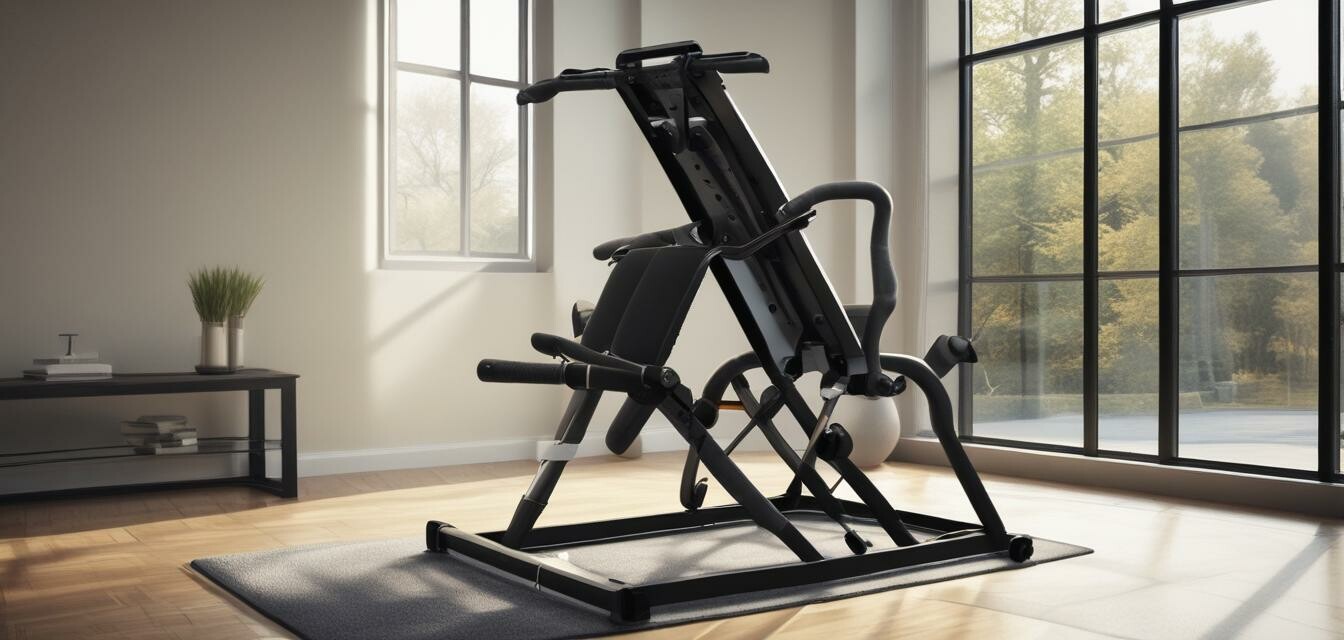
The Role of Inversion Tables in Posture Improvement
Key takeaways
- Inversion tables can alleviate pressure from the spine and help improve posture.
- Regular use may enhance spinal alignment and flexibility.
- Combined with good habits, inversion therapy can aid in posture correction.
- These tables are suitable for various fitness levels, making them accessible.
- Safety precautions are essential to maximize benefits and prevent injuries.
Improving posture and spinal health is essential for overall well-being. One promising tool for this is the inversion table, a piece of fitness equipment designed to help users invert their bodies and reduce pressure on the spine. This article delves into how regular use of inversion tables can significantly contribute to improved posture and spinal health.
How Inversion Tables Work
Inversion tables operate by allowing users to hang upside down or at an angle. This position encourages spinal decompression and can help alleviate tension in the back. While it may seem unconventional, the benefits extend beyond immediate relief. Here is how inversion therapy can influence posture:
- Decompression of the spine: By hanging inverted, the weight of the body stretches the spine, relieving pressure on vertebrae.
- Alignment: The inversion position promotes better alignment of the spine, which is crucial for maintaining posture.
- Enhanced flexibility: Regular use can enhance flexibility, making it easier to maintain good postural positions.
Benefits of Regular Use
Incorporating inversion therapy into your routine can foster various benefits, particularly for those aiming to improve their posture.
Pros
- Helps relieve back pain and tension.
- Aids in improving spinal alignment.
- Enhances overall flexibility.
- Easy to use with adjustable angles for comfort.
Cons
- Not suitable for everyone, such as individuals with certain medical conditions.
- Requires safety precautions to avoid injuries.
- Adjustment period needed for new users.
Safety Precautions
Although inversion tables are beneficial, safety is crucial. Here are some important safety tips to consider:
- Consult with a healthcare provider before starting inversion therapy.
- Adjust the table to your height to ensure proper use.
- Start with shorter durations and gradually increase as you gain comfort.
- Utilize a spotter or practice in a safe area to prevent slippage or falls.
Creating an Effective Inversion Routine
For best results, integrate inversion therapy into your fitness routine. Here’s a suggested effective inversion schedule:
| Session | Duration | Frequency |
|---|---|---|
| Beginner | 1-2 minutes | 2-3 times a week |
| Intermediate | 3-5 minutes | 4-5 times a week |
| Advanced | 5-10 minutes | Daily |
Complementary Exercises for Posture
In addition to using inversion tables, consider incorporating the following exercises to strengthen the core and improve posture:
- Planks
- Shoulder blade squeezes
- Chest stretches
- Back extensions
For more exercises, visit our Core Training Equipment section.
Conclusion
Inversion tables can play a pivotal role in improving posture and promoting spinal health. By alleviating pressure on the spine and encouraging proper alignment, they provide a unique tool for fitness enthusiasts. However, it is essential to approach this form of therapy with caution, ensuring that safety measures are in place. Combine regular use of inversion tables with core strengthening exercises for a comprehensive approach to posture improvement.
For additional safety tips and best practices regarding inversion tables, check our Fitness Tips category.
Remember, consistency is key in your journey towards better posture and spinal health through inversion therapy.